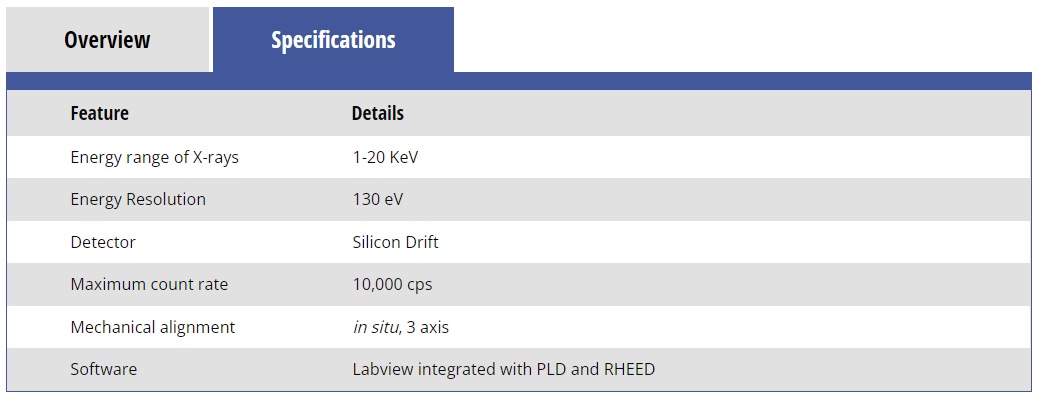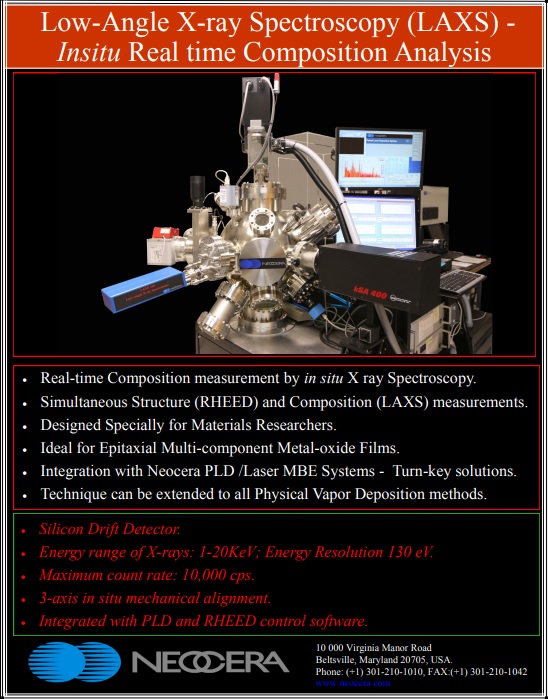Product
 Home> Product >Vacuums>Neocera
Home> Product >Vacuums>Neocera
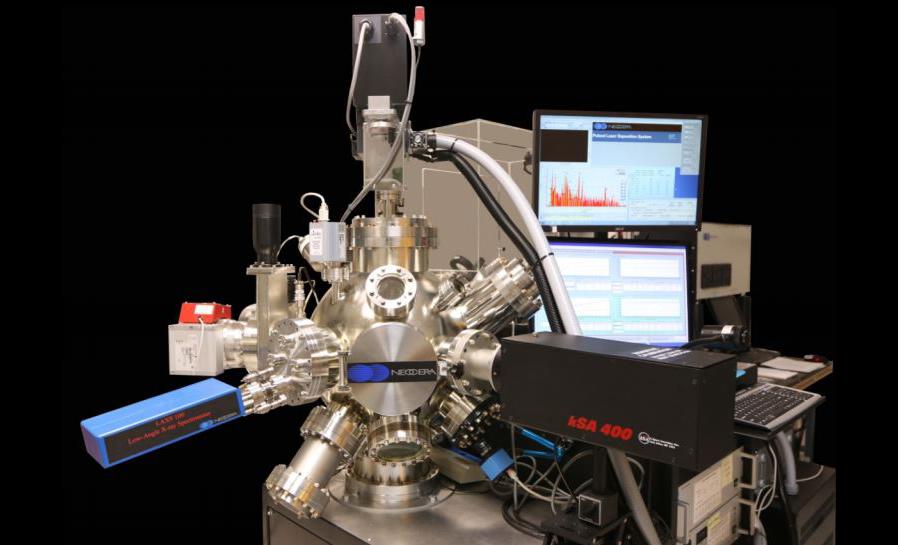
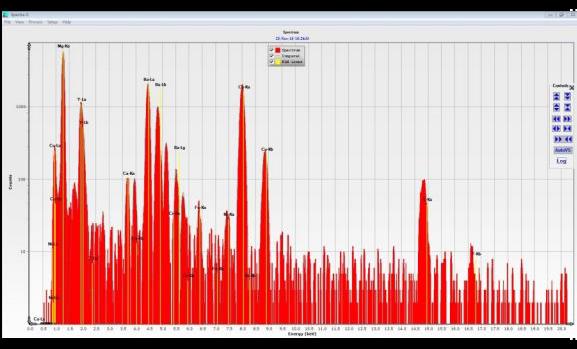


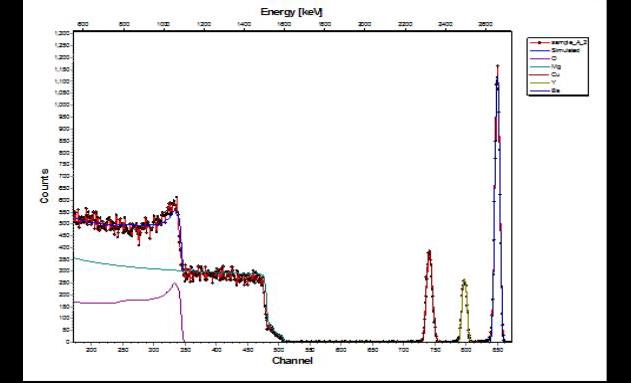



Neocera
Low-Angle X-Ray Spectroscopy (LAXS) – In-Situ Real Time Composition Analysis
Composition of a thin film is an important materials property that controls the application potential via the underlying electronic structure. Neocera’s LAXS uses an X-ray spectroscopic technique developed specifically to access the elemental composition of a multi-component thin film in situ, during film growth (real-time). LAXS analyzes X-ray emission spectra of the film excited by an energetic RHEED electron beam used in PLD/ Laser MBE Systems. Using a unique methodology of dynamic spectroscopy, LAXS automatically acquires, processes, and analyzes multiple spectra as the film is deposited layer by layer. LAXS software communicates seamlessly with PLD system, pulsed laser and process controls, resulting in a fully integrated turn-key PLD-RHEED-LAXS System. The system enables the PLD user to unravel the relation between the deposition parameter space and the variations in the resulting film composition, and to optimize the process for obtaining a high quality functional multi-component films for a variety of applications. LAXS takes advantage of intrinsically low incident angles of the electron beam, and small X-ray take-off angles. The low incidence angle, specific to RHEED, facilitates an efficient X-ray generation within the thin film under energetic electron impact. The low take-off angle of X-rays allows minimization of background signal. A special collimator optimizes field-of-view of LAXS to deliver maximum signal-to-noise ratio important for thin films that are only a few nanometers thick.
LAXS incorporates a state-of-the-art X-ray Spectrometer (Silicon Drift Detector). The X-ray detector and digital pulse processing facilitate high resolution in energy and fast counting rate. LAXS assembly, mounted on a standard vacuum flange, features a 3-axis mechanical stage to align the field-of-view of the instrument precisely to the substrate area irradiated with the RHEED electron beam. Data acquisition software is highly customized and incorporated in LAXS. The Spectra processing program can handle up to 40 elements. The user may specify several film elements of interest (such as PLD target elements), and LAXS follows the dynamics of their spectral intensities over the entire deposition process. Complete LAXS user guide, and a detailed procedure of the system relative sensitivity calibration protocol is provided
LAXS incorporates a state-of-the-art X-ray Spectrometer (Silicon Drift Detector). The X-ray detector and digital pulse processing facilitate high resolution in energy and fast counting rate. LAXS assembly, mounted on a standard vacuum flange, features a 3-axis mechanical stage to align the field-of-view of the instrument precisely to the substrate area irradiated with the RHEED electron beam. Data acquisition software is highly customized and incorporated in LAXS. The Spectra processing program can handle up to 40 elements. The user may specify several film elements of interest (such as PLD target elements), and LAXS follows the dynamics of their spectral intensities over the entire deposition process. Complete LAXS user guide, and a detailed procedure of the system relative sensitivity calibration protocol is provided

